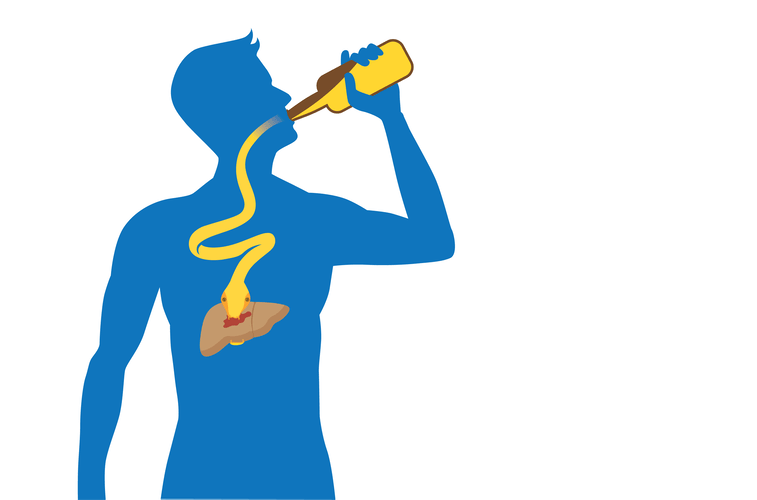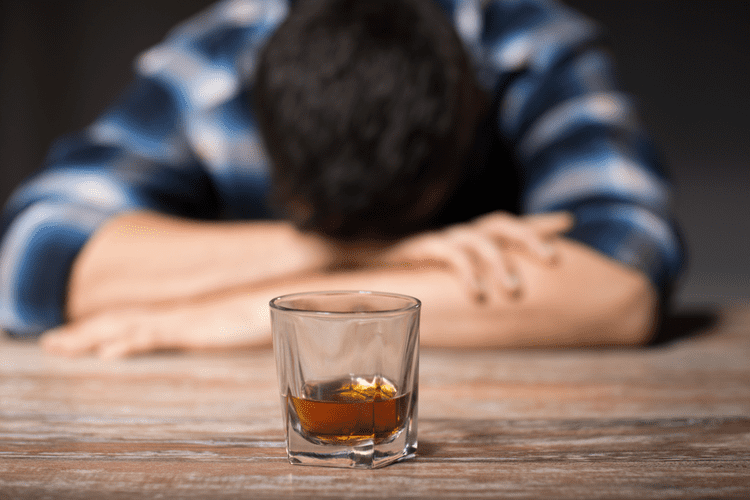Treatment of AUD focuses on relieving symptoms of alcohol withdrawal in the short term and then suppressing alcohol cravings in the long term. However, since alcohol affects people in different ways, recognizing AUD in yourself or in others can be subjective and challenging. Read on to learn more about the symptoms, risk factors, treatments, diagnosis, and where to get support. Drinking too much alcohol can weaken the immune system, making the body a much easier target for disease. Drinking a lot on a single occasion slows the body’s ability to ward off infections–even up to 24 hours later.
Alcohol & Your Health
Aftercare services include relapse prevention strategies to maintain long-term sobriety. Alcohol acts as a depressant on the central nervous system, slowing down brain activity. It increases GABA (gamma-aminobutyric acid) activity, producing calming effects, while simultaneously triggering a surge in dopamine, the “feel-good” neurotransmitter. Over time, this cycle alters brain chemistry, leading to dependency and the need for Alcohol Addiction Treatment. When combined with other evidence-based therapies, such as cognitive-behavioral therapy (CBT), MAT can help prevent relapse and increase your chance of recovery. BetterHelp offers affordable mental health care via phone, video, or live-chat.

Medication-Assisted Treatment
- Doctors monitor patients during this phase so they can promptly address withdrawal symptoms if they become severe.
- Ethyl alcohol (EtOH) addiction withdrawal and rehabilitation are difficult and mentally and physically exhausting processes.
- When people talk about alcohol in the context of drinking, they are referring to ethanol.
- It is, in fact, the most common intoxicant used in Western communities.
- They may become angry or irritable or may be drunk much more often than you believe they should be.
Alcohol addiction, often referred to as ETOH addiction, is a subject that touches countless lives, yet it remains often misunderstood. Despite being one of the most widely consumed substances in the world, alcohol can lead to serious physical, emotional, and social consequences when misused. For those struggling with addiction, the challenges can feel insurmountable—but understanding the problem is the first step toward hope and healing. While the numbers of Americans struggling with alcohol use disorders, including ethanol abuse, are still high more people are seeking help with their addiction every year. Read here to learn more about alcohol-related symptoms that can lead to death. ETOH is also found in many products, cleaning materials, and solvents that some people consume in an attempt to become intoxicated.
Liver Damage
EtOH is the abbreviation for ethyl alcohol, which is a chemical compound you might recognize from household cleaning compounds or even rubbing alcohol in some instances. This chemical can also be a disinfectant when used in high concentrations. It might make you wonder why something that is meant to kill organic bacteria and other kinds of viral infections is put into your favorite alcoholic beverages.
Medication-Assisted Therapy (MAT)

My compassion, resilience, empathy, wisdom, knowledge, experience and love I have for this forgotten population goes beyond words. I consider what I do for the addicted population as a calling versus a “career,” because I too was once an “addict and alcoholic.” Today I am 45.5 years alcohol and substance free. Growing up in Louisiana with addiction running rampant on both sides of my family. A life away from drugs and alcohol seemed impossible for someone like Alcoholics Anonymous me. I remember what it was like sitting across from someone thinking there is no way they could ever understand what I was going through. Various therapeutic approaches, such as CBT (cognitive behavioral therapy) and MET (motivational enhancement therapy), are effective in treating ETOH addiction.
What Is The Main Goal Of Rational-Emotive Behavior Therapy?
Withdrawal from EtOH is dangerous without medical support, covering symptoms such as shaking, restlessness, irritability, high blood pressure, nausea, seizures, and even delirium tremens. Acamprosate is typically used to help people who want to stop drinking, and it works by helping to eliminate cravings and restlessness, which can create an increased desire for alcohol. Medications have helped many people reduce the harm that excessive alcohol causes. Sometimes the medications are used along with group or psychological therapy, but they can also be used alone. The frequency of alcohol abuse can vary from one person to another. Someone can have an acute instance of https://aficoex.com/the-impact-of-alcohol-on-allergy-asthma-symptoms/ alcohol abuse followed by a period of time when they aren’t abusing alcohol.
- If your pattern of drinking results in repeated significant distress and problems functioning in your daily life, you likely have alcohol use disorder.
- Ethanol is also used in the manufacture of perfumes, solvents, and as a fuel additive.
- The addiction potential of EtOH is strong because it affects the behavior-regulating parts of the brain.
- Many people with alcohol use disorder hesitate to get treatment because they don’t recognize that they have a problem.
- EtOH, the chemical abbreviation of ethyl alcohol, is used in medical and scientific contexts to refer to alcohol.
Health Check Tools
Prior to the Diagnostic and Statistical Manual of Mental Disorders (DSM-5) 2013 edition, alcohol abuse and alcohol dependence were listed separately. However, in the new update, they are combined into a single mental health disorder called alcohol use disorder (AUD). In this edition, AUD is divided into three types, mild, moderate, and severe. Binge drinking involves drinking an excessive number of drinks per day within two hours. Drinking this ETOH abuse amount increases the person’s blood alcohol concentration (BAC) to 0.08% or above. While the health consequences of EtOH abuse are long and extensive, it is possible to recover.
- Even though it is used in countless other industries and applications, the primary use of EtOH is in alcoholic beverages like beer, wine, and hard liquor.
- NIAAA supports and conducts research on the impact of alcohol use on human health and well-being.
- Scientific and medical professionals use EtOH to describe the compound for ethanol.
- This clear substance is found in alcoholic drinks such as beer, wine and liquor.
- As a result, there will be an increase in the gamma-aminobutyric acid (GABA) levels in the brain, which slows down the activity in the body.
This sharp drop in lifestyle quality when drugs are removed from the picture is the reason why detox programs have to be run in drug rehabs to ensure the safety of an addicted person. If you relate to any of the risk factors for alcohol use disorder, you should avoid engaging in EtOH abuse. Alcoholism causes you to become dependent on the substance, leading to potentially life-threatening alcohol withdrawal symptoms when you stop using it. If you or a loved one suffers from alcohol addiction, you should seek professional help from an alcohol treatment program.
